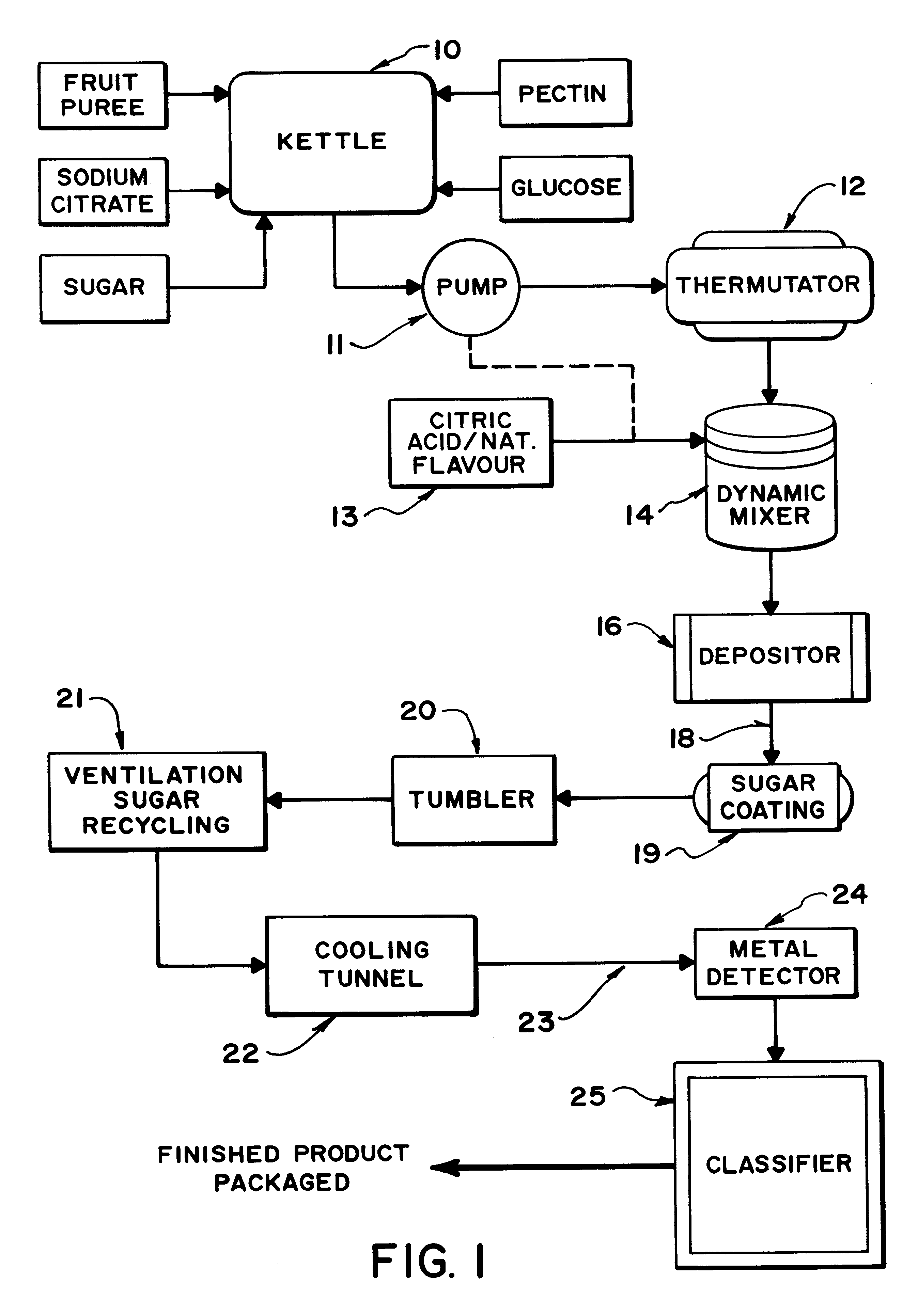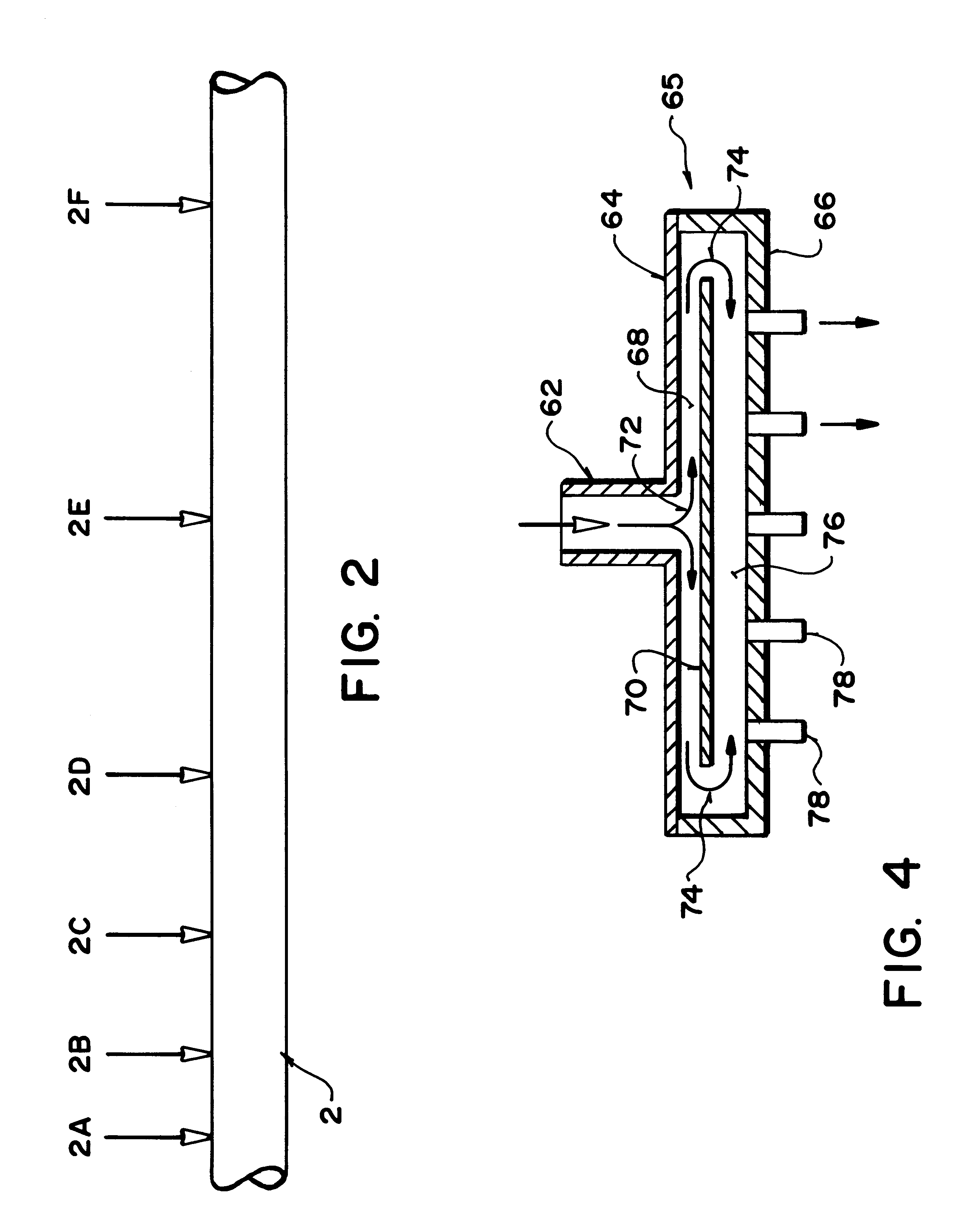Particulate natural fruit product and method of making same
a technology of natural fruit and product, applied in the field of particles natural fruit products, can solve the problems of fruit hardness and difficulty in eating, fruit moisture level drops below ten percent, etc., and achieve the effect of convenient formation
- Summary
- Abstract
- Description
- Claims
- Application Information
AI Technical Summary
Benefits of technology
Problems solved by technology
Method used
Image
Examples
Embodiment Construction
Introduction
The first step in producing fruit chips is the selection and initial processing of one or more naturally occurring fruit products to be used as an ingredient for the end fruit chip product. The fruit products that are used in the process of the invention can be either fresh, refrigerated, frozen, concentrated or dried. Fruit concentrates have been found to work well in the context of the invention and production of fruit chips.
Among the fruit products that are suitable for the subject invention are the following: blueberries, blackberries, strawberries, raspberries, oranges, lemons, limes, cherries, mangos, peaches, apricots, passion fruit, cranberries, apples, black currants, papayas and grapes. Other fruits can also be used.
In the event that a fruit with a thick skin, such as an orange, is used, it is preferable that the skin be removed and the remaining edible portion of the fruit be used. Also, if the fruit has a large pit, such as a peach, this can also be removed. ...
PUM
 Login to View More
Login to View More Abstract
Description
Claims
Application Information
 Login to View More
Login to View More - R&D
- Intellectual Property
- Life Sciences
- Materials
- Tech Scout
- Unparalleled Data Quality
- Higher Quality Content
- 60% Fewer Hallucinations
Browse by: Latest US Patents, China's latest patents, Technical Efficacy Thesaurus, Application Domain, Technology Topic, Popular Technical Reports.
© 2025 PatSnap. All rights reserved.Legal|Privacy policy|Modern Slavery Act Transparency Statement|Sitemap|About US| Contact US: help@patsnap.com



